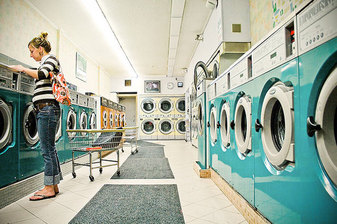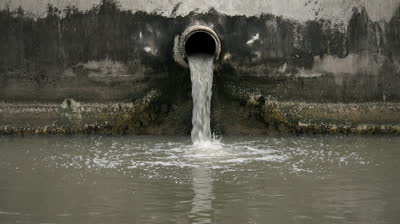What are microplastics?Definitions:
Microplastic- Small plastic particles that are less than <5mm in diameter unless stated otherwise. Microsynthetic fiber- Small plastic particles within the category of microplastics that are fibrous in shape. Introduction Recent research has rapidly expanded the field of microplastics, bringing greater understanding of the distribution, sources, impacts, and potential remedies of marine microplastic pollution. This preliminary literature review aims to broadly cover the current realm of microplastic literature and provide a basis for an experimental design to quantify contributions of microsynthetic fibers from clothing. Additionally, this literature review will serve to guide further research in determining Patagonia and the apparel industry’s role in the issue of marine microplastic pollution. |
Where do they come from?Describing the sources of marine microplastics and their distribution is critical to understanding location of impact and effective solutions. In the open ocean, James Moore (2008) noted that, based off of current models, the highest concentrations of floating microplastics to copepods ratio would be found at the center of high-pressure gyres.[i] A paper by Jambeck et al. (2015) on characterizing global inputs of plastic waste in the ocean found that small plastic debris was nearly untraceable to its source(s). The study also found that 1.7-4.6% of total plastic waste generated in a country would enter the ocean and that floating macroplastic (polyethylene and polypropylene) constitutes 53% of marine plastic debris while the rest are plastic types that do not float.
Initial research on the distribution of microplastics by Thompson et al. (2004) found microplastic pollution on 17 beaches worldwide and in plankton samples dating back to the 1960s. It was also noted that the microplastic concentrations in the plankton samples significantly increased over time.[ii] A later 2011 study by Browne et al. confirmed the presence of microplastics, largely composed of microsynthetic fiber (<1mm), in sediment samples from 18 beaches across the world. The study also found significant positive correlations (R2=0.34) between populous regions and microfiber concentrations as well as waste disposal sites for wastewater treatment plants (WWTP).[iii] These findings indicate that effluent from WWTP may be a primary transport pathway of microplastics into the ocean and that accumulation zones will have acute levels of microplastic pollution, potentially exacerbating its toxicological effects. Marine microplastics were also linked with freshwater systems and confirmed by a later study conducted by Klein et al. (2015).[iv] In the Rhine-Main Area in Germany, Klein et al. (2015) found, surprisingly, that microplastics were not significantly correlated with microplastic concentrations in their river shore samples. The authors caution that these contradictory findings may have been due to the small sampling area with a high diversity of population densities considered in the study.[v] Another study by Moore et al. (2005) also examined river concentrations of microplastics in California (Los Angeles River) and found highs of 12,653 microplastic (<4.75mm) particles per cubic meter, mostly composed of pellets and expanded polystyrene. [vi] Microplastics in concentrations of 20,264 particles per square kilometer have also been found in a remote lake (Lake Hovsgol in Mongolia), where densities were significantly correlated with wave energy (positive correlation) and distance from shore (negative correlation).[vii] [i] Moore, C. J. (2008). Synthetic polymers in the marine environment: a rapidly increasing, long-term threat. Environmental research, 108(2), 131-139. [ii] Thompson, R. C., Olsen, Y., Mitchell, R. P., Davis, A., Rowland, S. J., John, A. W., McGonigle, D. & Russell, A. E. (2004). Lost at sea: where is all the plastic? Science, 304(5672), 838-838. [iii] Browne, M. A., Crump, P., Niven, S. J., Teuten, E., Tonkin, A., Galloway, T., & Thompson, R. (2011). Accumulation of microplastic on shorelines woldwide: sources and sinks. Environmental Science & Technology, 45(21), 9175-9179. [iv] Klein S., Worch E., Knepper T. (2015). Occurence and spatial distribution of microplastics in river shore sediments of the Rhine-Main area in Germany. Environmental Science & Technology Just Accepted Manuscript. [v] Ibid. [vi] Moore, C. J., Lattin, G. L., & Zellers, A. F. (2005). Working our way upstream: a snapshot of land based contributions of plastic and other trash to coastal waters and beaches of Southern California. In Proceedings of the Plastic Debris Rivers to Sea Conference, Algalita Marine Research Foundation, Long Beach, CA. [vii] Free, C. M., Jensen, O. P., Mason, S. A., Eriksen, M., Williamson, N. J., & Boldgiv, B. (2014). High-levels of microplastic pollution in a large, remote, mountain lake. Marine Pollution Bulletin, 85(1), 156–163. |


